Features, types and purpose of locksmith hammers
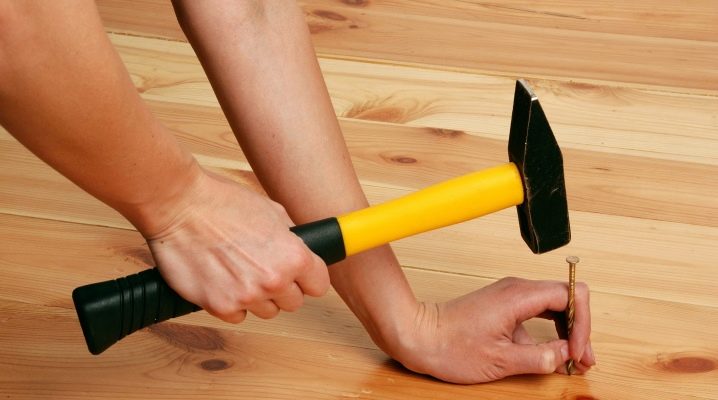
The hammer is an indispensable tool in the household. The ideal option would be if the set contains a set of several of its varieties at once, which will greatly facilitate the implementation of many highly specialized works. But for solving many everyday tasks, the most ordinary tool is quite enough - it is called a locksmith.


Peculiarities
A locksmith's hammer is a reliable and functional percussion tool used to hammer or break a variety of objects, in the first case it is most often a nail, and in the second it is difficult to separate fasteners. In addition, hammers have found application for impact work, for example, when manipulating a screwdriver equipped with a thrust bearing or with a chisel. The weight and dimensions of the hammer are determined by the current standard - GOST 23-10-77. Here, the definition of the term "locksmith" is given - that is, intended for the needs of the national economy. The weight of the locksmith's tools varies from 50 to 1000 g.
The hammer consists of the following parts:
- head - for impact on the treated base;
- wedge - holds the head and protects it from flying off when swinging;
- handle - needed to facilitate work, as well as increase order parameters.


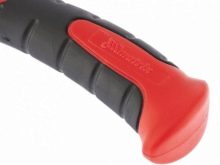
The hammer head has its own structural characteristics. She has a pair of endings - a striker and a sock, which are responsible for various manipulations. The striker can be square or round, a thin toe in most cases has a triangular or cylindrical section, at the very end it is slightly rounded. The head is made of steel grades U7 or 50, it is possible to use other alloys if they are in no way inferior to the above in terms of their physical and technical characteristics. An indispensable condition - the head must have a special protective coating, most often it is galvanized, in addition, the metal can be covered with phosphate or oxide compounds, after which the head is dried and painted with special enamels. The wedge is also made of steel.
For better grip with the handle, it contains grooves, also called ruffs.
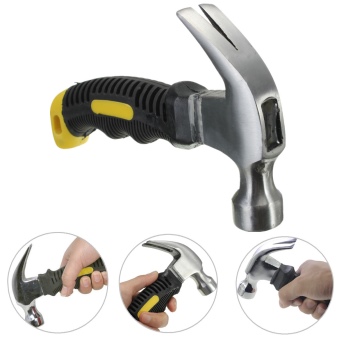

The handles can be of three types: oval, oval with a narrowing, or having a rectangular cross-section. Depending on the dimensions of the heads, the width of the handle varies from 20 to 40 cm. Household models are usually made with sizes of 25–35 cm, in which case the head usually weighs 10–40 g. Handles of a metal hammer are certainly smooth, without surface defects and burrs.

They should be massive, but elastic, in order to reduce the load on a person during manipulations. Maple, mountain ash, as well as dogwood, ash or oak wood are distinguished by similar properties. No cracks are allowed on the handle of such a tool, as well as in the places of its connection with the head.

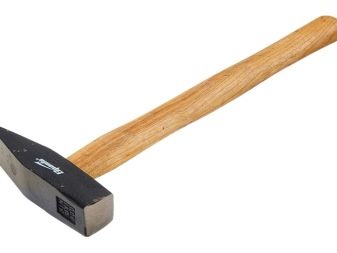
Types and purpose
Locksmith hammers come in different weights. For a locksmith's home workshop, tools weighing 300-500 g are suitable, because their capabilities are quite enough for most household work. However, experts recommend not to be limited to one hammer, but to have several models with different weights, since the purpose of the device depends on this.
For example, hammers with a weight of 50-300 g are optimal for tool work, and products weighing 400-600 g are indispensable for carpentry.

Depending on the shape, hammers of several varieties are also distinguished. So, one of the popular options has a rectangular shape and a square striker, the second is slightly convex, the striker is rounded. The first ones have a rather low cost, they are much easier to use, therefore they are widely used among both amateurs and experienced craftsmen. However, for hammers with a rounded striker, the striking side has a slight advantage, which increases the accuracy and power of the blow. According to the current GOSTs, tools with a round striker and versions with a spherical toe are also produced, but these models are quite rare on sale.

What is the difference from carpentry?
The closest thing to a bench hammer is a joiner's hammer. A locksmith hammer with a square hammer is indispensable for manipulating wood, and with a round hammer it is designed for sheet metal. The carpentry hammer has a difference in the shape of the sock - it is bifurcated, therefore it is often used as a nailer.
Its weight is 650-700 g, while a locksmith's tool can weigh from 250 to 800 g.

In addition to locksmith and carpentry, there are also such hammer options:
- a sledgehammer is the largest percussion tool used for knocking out partitions, all kinds of grooves, removing obsolete tiles and other similar work; its weight varies from 1 to 1.5 kg;
- a jackhammer - the smallest, its weight does not exceed 200 g; it is used exclusively for working with small nails.

How to choose?
A locksmith's hammer is a rather dangerous tool, so you should be very careful when choosing it.
- The first thing you need to find out when buying is the mass and dimensions of the working part required for the implementation of specific work. If you buy a hammer with a light strike, then the strike will have insufficient force, if the striker is too heavy, then, on the contrary, working with it will tire you too quickly. In addition, heavy hammers often spoil the foundations.
- When buying a locksmith's hammer, the material from which its working part is made is of no small importance. In accordance with GOST, butts cannot be produced by casting. A locksmith's hammer, according to the standards, must be strictly solid-forged, and the steel alloy must be hardened and then tempered. Hardening is carried out by cooling at a high speed - as a result of these manipulations, the material will acquire internal stress, therefore it is additionally heated up to +200 degrees and allowed to cool completely - this process is called letting go. Tempering slightly reduces the density, but such a hammer is more practical and durable than made from conventional alloys.
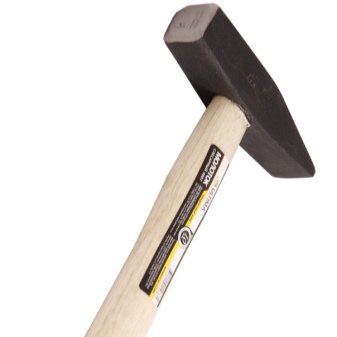

- Pay attention to the handle. Most modern models provide plastic, but often on sale you can find a tool with polyurethane paint or fiberglass. Nevertheless, according to experts, the classic wooden handle is the best, since you can always drive various pegs into the wood to make the grip more reliable with the striker. A good option is products with a fiberglass handle - this material is considered a separate type of fiberglass with polyester resins in the composition. It is a durable and fairly durable material with a long service life. Its strength is 9-10 times higher than plastic and 4 times higher than that of aluminum. Handles made of this material will not deform.


Nowadays, on the shelves of any hardware store, you can find the widest selection of locksmith hammers from various manufacturers.
- The most popular model is considered Brigadier 41-314... This tool is designed for a wide range of carpentry work. It has a square striker, is forged, phosphate coated, and weighs approximately 500 g.It is a classic tool because there are no innovative solutions in it, but it is very reliable, practical and durable. Products of this brand are widely in demand for all types of household and some professional work.
Important! In addition to this model, the manufacturer offers a large selection of hammers of different weights with wooden and plastic handles.


- In the rating of the most popular modifications, one of the leading positions is taken by the hammer Habero 600 IH-500used to perform a fairly wide range of work. The head of such a tool is made of a chrome vanadium alloy, is extremely hard, usually coated with a dark lacquer. The striker has a square shape. The popularity of the tool is explained not only by its functionality, but also by the price - the average cost of a hammer on the market is 200–250 rubles.

In general, marketplaces offer a large number of instruments from a wide variety of manufacturers.
All of them differ in weight, dimensions and purpose, you can make any choice. The main thing is that the hammer is made of quality materials, has an ergonomic structure and is durable.

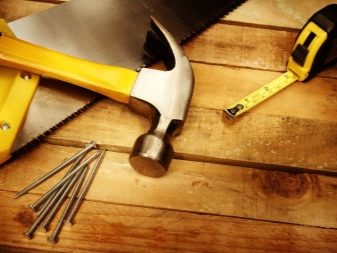
Subtleties of use
Unfortunately, the "Soviet" labor lessons are deeply past and in a rare school boys are taught to handle construction tools. It is not surprising that many people start work incorrectly, which often leads to injuries. First, remember the following rules:
- when carrying out any work, use only a specialized hammer, for example, it is not worth buying a tool weighing 900 g for upholstering furniture, models weighing 200 g are unsuitable for making tables and chairs;
- it is strictly forbidden to use the tool if the striker is wobbling - when swinging, it can fly off and greatly harm others;
- do not use a hammer if it is cracked, deformed or chipped.
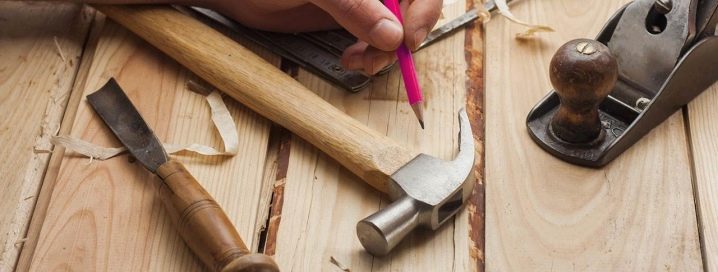
Now let's take a look at the basic rules of work.
- You need to pull the hammer correctly. When hammering in nails, increased accuracy is needed, so it is best to keep the tool as close to the firing pin as possible. If a strong blow is fundamental to you, then, on the contrary, grab it by the very end of the handle.
- If you intend to hammer in a nail, hold it between your left thumb and forefinger. The nail is grabbed closer to the cap, at the very top. If you take it by the lower part, it will begin to dangle from one side to the other and the hammer will most likely jump off - in such a situation, limb injuries are not excluded.
- If you are working with very small nails, you can hit your fingers. To prevent this from happening, use a little trick - just take a small piece of very thick cardboard and stick it on a nail - this way, you will not be holding it with your fingers, but with the help of paper. After the nail is at the base, it will not be difficult to remove the paper.


- Some hardwoods are too dense, so it makes sense to drill a narrow pilot hole beforehand. In this case, wood splitting is prevented, and the work itself goes much faster.
- In order to safely store the hammer, it is better to make a small hole at the bottom and hang the tool on a special nail, always with the striking part down. This will not only save time searching for tools, but also protect the surrounding objects from damage if the hammer falls from the shelf.

For an overview of the Brigadier locksmith hammer, see the video below.













The comment was sent successfully.